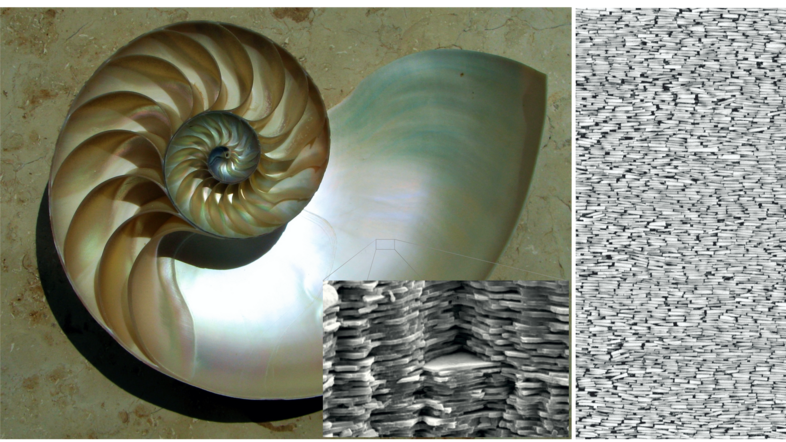Where nature shows science new ways
Do you remember, as a child, how you would look at the world around you in wonder and fascination? Why does water roll off a duck’s back, or the leaves of the Lady’s Mantle? Why are peacocks colorful? What can we learn from Nature in how she crafts her materials? And how can we apply these lessons to the materials of the future?
What are the secrets of Nature’s materials?
Materials – everywhere you look, every tangible object around you, is constructed of materials in one form or another. This applies to the clothes you wear, the mobile phone you use, the solar panels on our roofs – pretty much everything. With the awareness that our planetary resources are limited, materials scientists are constantly trying to push the boundaries of what materials can do, in our bid to make them do more with less. This is especially important given our rising population and the constant drive for technological advancements.
Learning from the best
For inspiration, we increasingly turn to one of the greatest materials architects of all – nature. Unlike the scientists of today, nature’s creatures, such as shellfish, or plants, do not typically have the luxury of choosing amongst a wide range of base chemicals or building blocks to create their materials. Instead, they utilize a multitude of ingenious strategies, perfected over millennia of evolutionary selection, to create materials bearing incredible properties.
Scientists are constantly trying to push the boundaries of what materials can do.Jia Min Chin
Tough shells, colorful beetles, and repellent leaves
Take the example of the humble seashell. For those of us who grew up with chalk in the classroom, we are familiar with how brittle it is. Despite this, seashells, which are primarily made of chalk, are incredibly tough, withstanding predator attacks and protecting the tender mollusk flesh. Their secret? It's all in the structure. When you zoom in on a seashell, you will see chalk particles held together by a protein glue in a staggered manner, like in a brick wall, preventing cracks from expanding in a straight line. Similarly, the human bricklayer does not build a wall where the bricks are directly on top of each other – rather, the bricks in adjacent layers are staggered to give the wall improved mechanical stability.
In summer, the brilliantly hued rose chafer beetle is a common sight, clumsily bobbing on flowers in the park. These metallic emerald beetles derive their color not from dyes, but from microscopic structures which interact with light. This strategy, also seen in peacocks and hummingbirds (and yes, rainbows), has inspired scientists to develop fade-resistant coatings or displays based on structure rather than chemicals which could pollute the environment.
Along the Donau, one can often observe ducks diving for food, yet remaining dry when they emerge as water simply beads up and rolls off their backs. One can try this also with the leaves of the common Lady’s Mantle – sprinkle some water on them and watch the water roll off! Their secret to water repellence lies in their microscopic structures which trap air and prevent wetting - this has inspired the formation of self-cleaning windows, waterproof fabric, and anti-fogging screens.
Designing molecular architecture
However, control of materials structure does not come so easily to scientists and engineers, particularly as each discipline typically deals with a certain scale. The molecular chemist can control the architecture of molecules, whilst the civil engineer can design the structure of buildings and infrastructure. However, it is the concurrent control across all these scales and those in between, where the challenge arises.
In my lab, my students and I derive inspiration from Nature to construct molecular materials with multi-length scale control. We use molecular design to create nano- and microcrystals, and we can rearrange and assemble them using electromagnetic fields. By fitting the crystals together in different ways, we can change their properties. We also harness fabrication techniques like 3D printing to generate objects large enough to be held by hand. Our goal is to create materials with improved properties, such as strength, or electrical conductivity. We also look into controlling structures to create surfaces that repel not just water, but also oil and even ice – which are important properties for infrastructure such as solar panels, wind turbines, and even for aviation. Above all, we strive to create new, and more efficient materials for a sustainable future.
She leads the ERC project DYNAMOF, in which she develops MOFs for energy applications.
A German translation of this article was published in Der Standard as part of a cooperation on the semester question.

